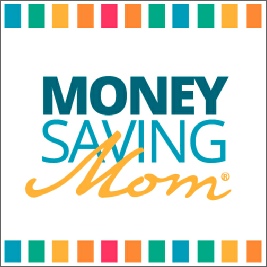





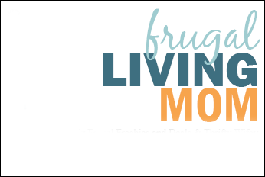
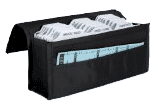


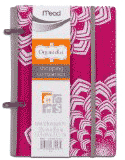
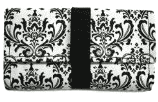
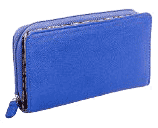

The Best Time to Buy Everything
From Frugal Living
From Frugal Living
From Live Like You are Rich



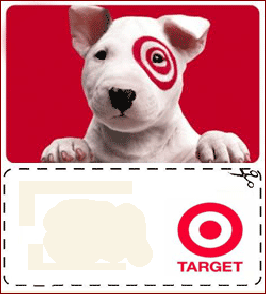
Printable
Coupons


Cut Your Grocery Bill in Half










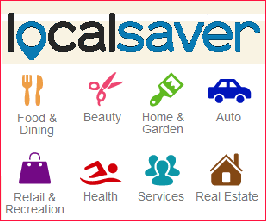

Offers.com
Your Place to Save Every Day




Successful Couponing
Trying to save BIG with coupons can be very overwhelming, especially when you’re first getting started. With all the hassle and headache that can come with it, and all the time it takes to find, print, and cut out coupons, you may find yourself wondering if you’re really saving enough to make it worth while. If time is money, it it really worth it in the long run?
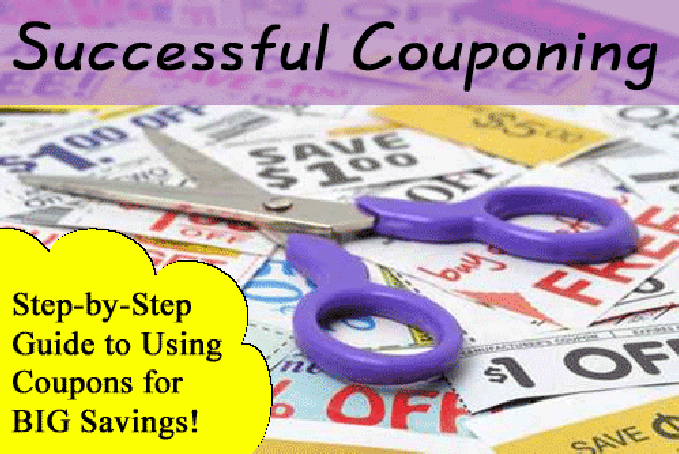
Well, this article is here to help you get start in your couponing campaign, and to get you set up and headed in the right direction, with as little hassle and headache as possible.
STEP 1: Get Organized
Before you start printing or clipping coupons, there are a few things you should do first to get yourself set up.
* Create a New Email Account
Let’s face it, you’re going to be getting a lot of emails so if you don’t want your normal email inbox to fill up with advertisements, a good place to start it to great a separate email account that will be exclusively for your couponing. Free email accounts are available from Google, Yahoo, Hotmail, or a number of other sites.
* Gather Supplies
Before you start printing or cutting out coupons you need to think about how you’re going to keep them. For starters, you might consider purchasing a cheap pencil box (from the school supplies section of your local store). Label the box “Coupons” and use it as a place to stash all the coupons you’ve cut out.
Once you start accumulating a lot of coupons, you’ll need to find a better way of organizing or categorizing them, such as an binder or a coupon wallet (take a look at the bottom of this page to see great products from Amazon). But for now, you just need somewhere to put them so they don’t get lost. It is also important to keep this coupon box close to your purse, wallet, or car keys, so you remember to take it with you when you go out shopping (which is very important!)
In addition to a coupon holder, you will also need a printer, scissors, pens, a small notebook, and some self adhesive index tabs.
* Start a Comparison Shopping Notebook.
* Create a New Email Account
Let’s face it, you’re going to be getting a lot of emails so if you don’t want your normal email inbox to fill up with advertisements, a good place to start it to great a separate email account that will be exclusively for your couponing. Free email accounts are available from Google, Yahoo, Hotmail, or a number of other sites.
* Gather Supplies
Before you start printing or cutting out coupons you need to think about how you’re going to keep them. For starters, you might consider purchasing a cheap pencil box (from the school supplies section of your local store). Label the box “Coupons” and use it as a place to stash all the coupons you’ve cut out.
Once you start accumulating a lot of coupons, you’ll need to find a better way of organizing or categorizing them, such as an binder or a coupon wallet (take a look at the bottom of this page to see great products from Amazon). But for now, you just need somewhere to put them so they don’t get lost. It is also important to keep this coupon box close to your purse, wallet, or car keys, so you remember to take it with you when you go out shopping (which is very important!)
In addition to a coupon holder, you will also need a printer, scissors, pens, a small notebook, and some self adhesive index tabs.
* Start a Comparison Shopping Notebook.
One great way of keeping track of what items cost is to keep a small notebook in your purse to carry with you when you’re out shopping. Consider getting self adhesive index tabs to section the notebook into different categories.
Here’s a recommended category list: Food (baking, canned, dairy, frozen, produce, meat, other), Household (kitchen, cleaning, toiletries), Health & Beauty (medical, supplements, dental, cosmetics), Electronics, Work (office supplies, tools), Pregnancy, Kids, Holidays, Travel, Personal, Other.
With these categories tabbed in your notebook, as you’re shopping, start filling things in taking note of the items that you buy regularly. Note the item, the brand name, the size of the package, which store you purchased it from, and the price you paid for it. As you visit other stores, take note of how much the same item costs in different locations. You do NOT need to write down everyone’s price for milk – but if you find a location that sells milk for cheaper than what you’ve noted in your notebook, make a note of it for future reference.
If you do this for all the key items you purchase regularly, you will have a running list of what items can be purchased for cheapest in what location.
Now you’re ready to start looking for “good deals”. Do some comparison shopping, consider if there’s a cheaper brand you could switch to, or if it would be cheaper to buy the same item in bulk.
When you find a coupon advertising a particular item, take a look at your comparison shopping notebook and see if the “deal” on the coupon is really going to save you money, and if that particular brand (with the coupon) would really be cheaper than what you’re paying on cheaper brands.
STEP 2: Pick a Store
Since couponing can be overwhelming when you’re first getting started, it is easier to start by getting to know one store at a time.
Which store do you shop from the most? Walmart? Krogers? Target? Walgreens? Aldi? Pick ONE store to start with, and don’t add on until you’re feeling comfortable with the couponing in the first store.
Once you’ve picked out your store it’s important to get a copy of the store’s coupon policies. A great source for finding these policies is on The Krazy Coupon Lady website.
Print out a copy of the store policy and keep it with you when you go shopping! If there’s any question regarding your coupon usage, you will have it to refer to or show to the cashier in the checkout.
STEP #3: Collect Your Coupons
There are a lot of places where you can find coupons. Here are a few good starting points to begin with:
* Newspapers. Subscribe to the local newspaper, it really is a great way to find coupons. Ask if you can get a discount on multiple subscriptions, if you sign up for multiple newspapers that’s that many more coupons for you.
* Magazines. Several magazine publications have coupons inside.
* Family, Friends, and Neighbors. Not everyone likes couponing, most people end up throwing the coupons in the trash. So ask around, you probably have several friends or family members who would be more than happy to hand over their coupons to you. Ask around in the neighborhood too. Let people know you’re interested in coupons if anyone’s willing to save them up for you.
* Internet. There are several sites where you can get coupons to print off the internet (see right panel for links to coupon sites).
* In-Store . Look for coupons on store shelves, on products, and on the back of your receipts. Some stores even have coupons that print out with the receipt.
* Junk Mail. Several manufacturers send out coupons with their advertisements, so be sure to scan through your junk mail for coupon deals before tossing the papers.
* Directly from the Manufacturer. Check manufacturer websites for printable coupons or contact the companies and ask if they have any special coupon mailings.
STEP #4: Know How Coupons Work
Knowing some basic things about coupons can save you a lot of stress and embarrassment at the checkout counter.
* Coupons have expiry dates. You need to keep this in mind, and be very conscious about using a coupon before it expires.
* Coupons are very specific. The same item you see being advertised can come in all sorts of different colors, sizes, quantities, etc. Make sure to read the coupon carefully – it will be very specific about which of these variations is the sale item.
* There are different kinds of coupons. Manufacturer coupons, store coupons, etc. Double up coupons for more savings. Often times you can use a manufacture coupon and a store coupon on the same item, or combine a coupon with a rebate offer. Many Buy-One-Get-One-Free deals allow you to use multiple coupons in the same transaction. In some cases you can even use your coupons on items that are already on sale for double savings. Just make sure to always read the small print before doubling up on coupons so you know what is permissible in regards to that particular deal.
STEP 5: Plan Your Shopping Trip
Before you go to the store make a list of what you plan to buy and make sure you have the right coupons in hand.
Plan to do your shopping at a time when there’s less likely to be crowds of people or long lines at the checkout. Early morning, early afternoon, or late evening are good times. Not weekends!
Coupon shopping will be much easier if you set up a regular routine – setting aside specific days to do specific tasks.
Day 1 (Sunday?) – Find coupons (gather, print, cut-out, collect)
Day 2 (Monday?) – Sort your coupons and make your weekly menu plan.
Day 3 (Tuesday?) – Write out your shopping list and heat to the store (don’t forget to take the coupons with you!)
If you keep a consistent schedules, you can divide the coupon chores into three days, do your grocery shopping on the same day(s) of the week, and in this way you will not become so overwhelmed by the prospect of coupon shopping.
STEP 2: Pick a Store
Since couponing can be overwhelming when you’re first getting started, it is easier to start by getting to know one store at a time.
Which store do you shop from the most? Walmart? Krogers? Target? Walgreens? Aldi? Pick ONE store to start with, and don’t add on until you’re feeling comfortable with the couponing in the first store.
Once you’ve picked out your store it’s important to get a copy of the store’s coupon policies. A great source for finding these policies is on The Krazy Coupon Lady website.
Print out a copy of the store policy and keep it with you when you go shopping! If there’s any question regarding your coupon usage, you will have it to refer to or show to the cashier in the checkout.
STEP #3: Collect Your Coupons
There are a lot of places where you can find coupons. Here are a few good starting points to begin with:
* Newspapers. Subscribe to the local newspaper, it really is a great way to find coupons. Ask if you can get a discount on multiple subscriptions, if you sign up for multiple newspapers that’s that many more coupons for you.
* Magazines. Several magazine publications have coupons inside.
* Family, Friends, and Neighbors. Not everyone likes couponing, most people end up throwing the coupons in the trash. So ask around, you probably have several friends or family members who would be more than happy to hand over their coupons to you. Ask around in the neighborhood too. Let people know you’re interested in coupons if anyone’s willing to save them up for you.
* Internet. There are several sites where you can get coupons to print off the internet (see right panel for links to coupon sites).
* In-
* Junk Mail. Several manufacturers send out coupons with their advertisements, so be sure to scan through your junk mail for coupon deals before tossing the papers.
* Directly from the Manufacturer. Check manufacturer websites for printable coupons or contact the companies and ask if they have any special coupon mailings.
STEP #4: Know How Coupons Work
Knowing some basic things about coupons can save you a lot of stress and embarrassment at the checkout counter.
* Coupons have expiry dates. You need to keep this in mind, and be very conscious about using a coupon before it expires.
* Coupons are very specific. The same item you see being advertised can come in all sorts of different colors, sizes, quantities, etc. Make sure to read the coupon carefully – it will be very specific about which of these variations is the sale item.
* There are different kinds of coupons. Manufacturer coupons, store coupons, etc. Double up coupons for more savings. Often times you can use a manufacture coupon and a store coupon on the same item, or combine a coupon with a rebate offer. Many Buy-
STEP 5: Plan Your Shopping Trip
Before you go to the store make a list of what you plan to buy and make sure you have the right coupons in hand.
Plan to do your shopping at a time when there’s less likely to be crowds of people or long lines at the checkout. Early morning, early afternoon, or late evening are good times. Not weekends!
Coupon shopping will be much easier if you set up a regular routine – setting aside specific days to do specific tasks.
Day 1 (Sunday?) – Find coupons (gather, print, cut-
Day 3 (Tuesday?) – Write out your shopping list and heat to the store (don’t forget to take the coupons with you!)
If you keep a consistent schedules, you can divide the coupon chores into three days, do your grocery shopping on the same day(s) of the week, and in this way you will not become so overwhelmed by the prospect of coupon shopping.
Important Tips and Strategies
Remember, this article is NOT just talking about how to do couponing, but is actually about how to be successful at couponing. Anyone can print out coupons, but it takes a very intentional and informed person to really save money doing it. Here are some important tips and strategies that come from people who have been successful at saving BIG by using coupons:
* Don’t use a coupon on any items you wouldn’t otherwise purchase.
Just because something is a “good deal” doesn’t mean you have to buy it. If you end up using your coupons to buy a lot of things you wouldn’t normally purchase you’re going to accumulate a lot of “stuff” and probably end up spending more money each month instead of less.
* Know what items cost.
If you’re wanting to buy a name brand item you may need a coupon to even be able to afford it. But there are many off-brand items that give you a very similar product for a much cheaper price, often even cheaper than using a coupon.
* Change the way you shop. If you want to save money with coupon shopping, you will need to change your mentality in regards to shopping. You can’t think of shopping as a spur-of-the-moment grocery run. And your long grocery lists of things you NEED to buy (regardless of the price) need to slowly merge into smaller lists of items to buy in bulk or stock up on while they’re on sale.
When you find a great deal on an item, buy enough of it to last you 6 months to a year. Don’t buy so much that you’ll never use it all (or don’t have room for it all in your house), but buy enough so that you will not need to purchase it again for quite some time. Having a pantry or “extra supplies” closet will really help in your bulk shopping. And while stock piling can cost you more in the initial start-up, it will save you LOTS in the long run.
* Plan your meals according to what’s on sale.
Use your coupons to purchase food items, and use your purchases in your meal planning. Trying to find coupons to match what’s on your grocery list will be much harder than forming a menu and grocery list that matches what coupons you have. Let your coupons help out in deciding what you’re going to make as meals in the next week. Then shop accordingly.
* Pay attention to store sale-cycles . Retail stores offer certain items at lower prices at certain times of the year. Some items (like breakfast cereals) are on sale every few weeks, while others only come on sale once or twice a year. See The Best Time to Buy Everything for ideas of when to shop for certain items.
* Buy items “out of season”. Seasonal items (winter or summer items) are always on sale at the end of the season. You can usually get really great clearance prices on seasonal items if you buy them the year before you will actually be needing them.
* Keep your coupons with you at all times. Anytime you leave the house, take your coupons along. You never know when you might have a use for them.
Coupon Organizing Resources



